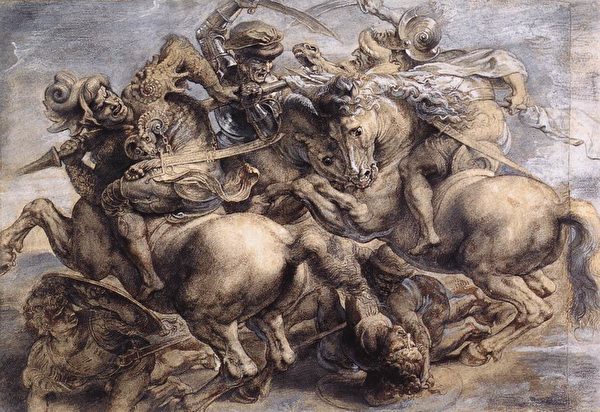何新:怪物Oddfellows——鲁迅小说中提到的共济会
以下一段话摘录自鲁迅的1924年写作的短篇小说《肥皂》,该文全文收入在《鲁迅全集》《彷徨》一集中:
“········(略)
学程正捧着一本小而且厚的金边书快步进来,便呈给四铭……四铭接来看时,知道是字典,但文字非常小,又是横行的。他眉头一皱,擎向窗口,细着眼睛,就学程所指的一行念过去:
‘第十八世纪创立之共济讲社之称’。——唔,不对。——这声音是怎么念的?他指着前面的‘鬼子’字,问。
——‘恶特拂罗斯(Oddfellows)。’ ”
据《鲁迅全集》注释:
“《肥皂》一文系鲁迅写于1924年3月22日,最初发表于1924年3月27、28日北京的《晨报副刊》。”
关于鲁迅此文中提到的“共济讲社”,《鲁迅全集》编者注释如下:
“共济讲社(Oddfellows)又译共济社,十八世纪在英国出现的一种以互济为目的的秘密结社。”
解释基本不错,但是不够确切。Oddfellows本身是英文中一个很怪的单词,具有怪物、怪人、怪家伙和变色龙的涵义。而作为共济会旗下一个会社的名称,Oddfellows则是一个极其古老而神秘的组织,兹根据我了解的国外资料,略作考释如下。
共济会的旗下组织:“怪物”——Oddfellows会社
Oddfellowsd的会徽
Manchester Unity Logo
【Oddfellows 怪物·变色龙会社】
鲁迅在《肥皂》这篇小说中称做“共济社”的这个奇怪组织,是Masonry共济会下的一个特殊分会,起源于犹太人和改宗犹太人的兄弟会,主要分布在美国、欧洲、以色列、英国。
根据这个组织的传说,”怪物“们的兄弟会可以追溯到公元前6世纪流亡的以色列人从巴比伦被驱逐的时期,许多犹太人在被流放后联合起来组织成为一个兄弟会团体而互救助、支持和反抗。
根据"怪物"Oddfellows会社的文件《历史的痕迹,传说中的起源》,这个组织从以色列人的兄弟会,在后来又演变成为在罗马和英国的犹太富裕商人们的行业公会。
由此可见”怪物“这个共济会组织的历史非常悠久,实际可能也是共济会的最初起源性组织之一。而Oddfellow的语源据说也非常古老,可能与《圣经旧约》的传说有关,这个组织的女性分会称为“Rebekahs”,也从《旧约》中得名。
17世纪英国的“怪物”组织OddFellows机构得到重建和改革,近代OddFellows主要创立人是13位英国商人,其中最著名的领袖是犹太商人Thomas Wildey(托马斯·维德)。
分支包括:Order of the Eastern Star(国际东方星社)
东方之星会社的徽标
【Oddfellows】
This article is about the Oddfellows in the United Kingdom. For other countries, see Odd Fellows. The name Oddfellows refers to a number of friendly societies and fraternal organisations operating in the United Kingdom. It also refers to a number of Lodges with histories dating back to the 18th century.[1][2] These various organisations were set up to protect and care for their members and communities at a time when there was no welfare state, trade unions or National Health Service. The aim was (and still is) to provide help to members and communities when they need it. The friendly societies are non-profit mutual organisations owned by their members. All income is passed back to the members in the form of services and benefits. The Oddfellows are also fundraisers for both local and national charities; branches (lodges) raise money for local causes, and the Societies as a whole raise significant amounts for charities. History Fraternal societies and Guilds The Oddfellows are one of the earliest and oldest Friendly Societies, but their early history is obscure and largely undocumented. There have been legends tracing their origins back to the exile of the Israelites in Babylon in the sixth century BC,[1] and claims that the order was brought to Europe by Jewish prisoners, after the destruction of the temple at Jerusalem by the Roman Emperor Titus in AD 70.[citation needed] The legends go on to claim that "an Order of Odd Fellows was established in 1452 by knights who were said to have met at the Boulogne-sur-Mer in London and formed a fraternity".[2] Although these legends are at best, dubious, the evolution from the Guilds is more reliably documented.[1][3] By the 13th century, the tradesmen's Guilds had become established and prosperous. During the 14th Century, with the growth of trade, the guild "Masters" moved to protect their power (and wealth) by restricting access to the Guilds. In response, the less experienced (and less wealthy) "Fellows" set up their own rival Guilds.[1][4] The Odd Fellows The name "Odd Fellows" arose because, in smaller towns and villages, there were too few Fellows[clarification needed] in the same trade to form a local Guild.[citation needed] The Fellows from a number of trades therefore joined together to form a local Guild of Fellows from an assortment of different trades, the Odd Fellows.[1] During the following centuries, the idea of common people working together to improve their situation met with opposition (and persecution) from the upper classes, who saw them possibly as a source of revenue (taxes) but also as a threat to their power. For example, when the English King Henry VIII broke with the Roman Catholic Church, the Guilds were viewed by him as supporting the Pope, and in 1545 he confiscated all material property of the Guilds. Queen Elizabeth I took from the Guilds the responsibility for training apprentices, and by the end of her reign, most Guilds had been suppressed.[1][5] The Oddfellows Lodge The elimination of the Trade Guilds removed an important form of social and financial support from ordinary working people. In major cities like London, some Guilds (e.g. the "Free Masons" and the "Odd Fellows") survived by adapting their roles to a social support function. Both of these had their base in London, but had established branches (called 'Lodges') across the country.[1] The earliest surviving records of an Oddfellows Lodge is the manuscript of the rules, dated 1748, of the Loyal Aristarcus Lodge No.9 which met in inns in the Southwark, Hatton Garden and Smithfield areas of London[6] Many pubs in Britain are named 'The Oddfellows' or 'Oddfellows Arms', probably because they were once meeting places of Lodges.[1] The French Revolution caused "the establishment" to view organisations such as the Oddfellows and Freemasons with fear. Membership became a criminal offence in France, and such organisations were driven underground and forced to use codes, passwords, special handshakes and similar mechanisms.[1] Fear of revolution was not the sole reason for persecution; Friendly Societies like the Oddfellows were the predecessors of modern-day trade unions and could facilitate effective local strike action by levying all of their members for additional contributions for their benevolent funds, out of which payments could be made to the families of members who were on strike.[1].[7] The Oddfellows subsequently introduced a number of novel benefits for members. These included the Travel Warrant, which allowed members seeking work to stay overnight in an Oddfellows Hall, anywhere in the country, free of charge. The Oddfellows also introduced standard protection policies, sometimes called "tables" because each type of policy had its own numbered table of premium rates. People could subscribe to protect themselves financially. In the United Kingdom at that time, until 1948, payment was required to see a doctor or to go into hospital. Many people therefore joined friendly societies like the Oddfellows to obtain financial protection to meet these costs.[1][8] Evolution As a result of the Glorious Revolution of 1688, (when the Protestant William of Orange replaced the Catholic King James II), in the mid-18th century the Oddfellows split into The Order of Patriotic Oddfellows (based in the south of England and supporting William)[9] and The Ancient Order of Oddfellows (based in the north and favouring the Stuarts). [edit]The Grand United Order of Oddfellows Subsequent to the failure of Bonnie Prince Charlie's uprising, in 1789 the two Orders formed a partial amalgamation as the Grand United Order of Oddfellows.[1][2] These days they are more commonly known as "The Grand United Order of Oddfellows Friendly Society" (GUOOFS)[10] The Independent Order - Manchester Unity Manchester Unity Logo In 1810, members of the Oddfellows in Manchester area became dissatisfied with the way the Grand United Order was being run and formed an independent Order with the title 'Manchester Unity'. This organisation is now referred to as "The Independent Order of Oddfellows (Manchester Unity)", or more simply, "The Manchester Unity Order of Odd Fellows" (MUOOF). According to Manchester Unity literature: "With their improved organisation and rules, they encouraged many other lodges across the country to leave the old Grand United Order and join the Independent Order under the 'Manchester Compliance'.[1] [edit]Subsequent breakaways Subsequent breakaways from the parent Grand United Order and from the new Manchester Unity Order resulted in the formation of further Orders of Odd Fellows. In the case of the parent Order, various lodges seceded in 1832 to found the Ancient & Noble (Bolton Unity), which subsequently dissolved in 1962, and in the case of the new Order, the Nottingham Odd Fellows.[2] The Grand United Order of Oddfellows (Sheffield Unity) was formed in an early breakaway from the Manchester Unity. The Ancient Noble Order of Oddfellows (Bolton Unity) was formed from the Sheffield Unity in 1832. The Nottingham Ancient Imperial Order of Oddfellows was formed from the Sheffield Unity in 1812. The Improved Independent Order of Oddfellows (London Unity) was formed from the Manchester Unity around 1820. The British United Order of Oddfellows was formed from the Imperial Nottingham Order in 1867.[11] The Albion Order of Oddfellows was formed from the Manchester Unity in 1831. Several other secessions then occurred to form the Nottingham Independent Order, the Derby Midland Order, the Ilkison Unity [Ilkeston?] and the Norfolk and Norwich Unity. The Kent Unity was formed in 1805; its first Lodge, however, was not formed until 1861.[11] The Kingston Unity of Oddfellows was formed from the Manchester Unity in 1840, and the National Independent Order was formed from the Manchester Unity in 1846.[11] There was an East Anglia Unity; a few items of their regalia and jewels are in the museum at Freemasons' Hall in London.[12] The Wolverhampton Unity of Oddfellows ceased to exist in 1876 when it merged with the Ancient Order of Shepherds.[6] [edit]The American Separation The Oddfellows had spread to America in the late 18th century, and several unofficial lodges existed in New York City; but American Odd Fellowship is regarded as being founded in Baltimore in 1819, by Thomas Wildey, and the following year affiliated with the Manchester Unity.[1] In Britain in 1834, the Tolpuddle Martyrs were unexpectedly convicted and transported for "membership of an illegal friendly society". The Oddfellows "Board of Directors" hastily modified the "constitution" to evade a similar fate. Members of the Oddfellows in the United States were not pleased to see the ancient rituals changed without their agreement, particularly to satisfy a British Government against which they had fought a war of independence. As a result, the Oddfellows in America declared their independence from the Manchester Unity of Oddfellows and became a self-governing Order – the Independent Order of Odd Fellows – which established lodges across the world (and continues to this day).[1][13] Legitimacy The Oddfellows continued to be viewed with suspicion by "the establishment". At various times, right up to 1850, some aspects of the Orders' practices were declared illegal. However, by 1850, the Independent Order of Oddfellows Manchester Unity Friendly Society had become the largest and richest friendly society in Britain. This growth was spurred by the growth caused by the Industrial Revolution, the lack of Trade Unions, and the lack of personal or public insurance; only by joining mutual friendly societies like the Oddfellows could ordinary people protect themselves and their families against illness, injury or death.[1] In 1911, when Asquith's Liberal government was setting up the National Insurance Act in Britain, the Oddfellows protected so many people that the government used the Oddfellows' actuarial tables to work out the level of contribution and payment required. At that time the Oddfellows was the largest friendly society in the world.[1][14] The Welfare State and modern Oddfellows The Welfare State and the National Health Service took over the major part of the role of Friendly Societies, and since 1948 the role of the Oddfellows has evolved in other directions, with a continuing focus on social involvement, care & support, and financial benefits.[1] In the second half of the 20th century, the Oddfellows moved into financial products.[1][14][15] The international spread of Oddfellowship The concept of the Oddfellows was taken abroad as members emigrated to the far-flung corners of the Commonwealth and to the New World. Today, the Oddfellows can be found in many countries across the world, including Australia, New Zealand, South Africa and the West Indies. The American Order has set up lodges in Canada, Germany, Iceland, Denmark, Belgium, Finland, Holland and many other European countries.[1][16] In Asia, the Oddfellows was revived when lodges were re-established in the Philippines in 2009.[17] A revival of the procedures followed by the oldest ascertained Oddfellows' unit, the "Loyal Aristarcus Lodge" in London (1730–40), has been recently[when?] started by a group of Italian Oddfellows, led by Masonic author Michele Moramarco.[18]
【Editors note】
The majority of the contents of this page are
sourced from a document on the Manchester Unity website that does
not quote its sources. Other references tell a similar story, but
they, too, rarely quote their sources. See the Bibliographysection
on the Odd Fellows page for more sources.
1^ a b c d e f g h i j k l m n o p q r s t "History of the
Oddfellows", www.oddfellows.co.uk. Retrieved
2007-09-02.
Various legends claim that fraternal societies date back to the
exile of the Israelites from Babylon in 587 BC, when many of those
exiled banded together into a brotherhood for mutual support and
defence. The "History of the Oddfellows" document traces the
legendary origins of fraternal organisations from the Israelites,
through the Romans and into Britain, up to the time of the
formation of the Guilds. "While there is little contemporary proof
of this chain of events, it is known that similar fraternities did
exist from classical times." Note, however, that much Oddfellow
terminology has biblical origins. For example, the female Order are
called "Rebekahs", named from the Old Testament
character.
2^ a b c d "History of the Society" www.guoofs.com. Retrieved
2007-09-12.
The "History of the Society" page says: "Although
no formal records exist, historians have advanced the theory that
an Order of Odd Fellows was established in 1452 by knights who were
said to have met at the pub named "Boulogne-sur-Mer" in London and
formed a fraternity. Large meetings were treated with some
suspicion in those days, and wisdom possibly dictated that it be
prudent only to keep records on matters of great
importance."
3^ The "History of the Oddfellows" document goes on to describe the
evolution of the Guilds, and Oddfellow terminology derived from the
Guilds. For example, each Guild was headed by a Grand Master, the
name that the Oddfellows use to refer to their annually elected
Head.
4^ According to the "History of the Oddfellows" document, the
"Master" required that guild members wear expensive uniforms and
jewellery to meetings; as the less wealthy "Fellows" could not
afford these, they were thus precluded from membership. Lodge
"collars" and "jewels" have their origins in this guild-masters'
"restrictive trade practice".
5^ Weinbren, Daniel (2010) The Oddfellows
1810-2010: Two Hundred Years of Making Friends and Helping People
Lancaster: Carnegie Publishing, ISBN 9781859362075
6^ a b Victoria Solt-Dennis (2005). Discovering Friendly and
Fraternal Societies: Their Badges and Regalia. Princes Risborough:
Shire Publications Ltd. ISBN 0747806284.
7^ Burn, I (c.1850) An Historical Sketch of the Independent Order
of Oddfellows
8^ History of the Oddfellows from 1066 to the Present (2006)
Manchester: Independent Order of Oddfellows[vague]
9^ The existence of the 'Patriotic' Order has been confirmed by the
discovery of a copy of the rituals revised by a meeting of the
Grand Lodge held in London in 1797.
10^ The Grand United Order of Oddfellows, established in England in
1789, should not be confused with the Grand United Order of Odd
Fellows, established in the USA in 1843.
11^ a b c The Complete Manual of Oddfellowship: Being a Practical
Guide to its History, Principles, Ceremonies and Symbolism (1879.
Second edition: 1895.) London: A Lewis
12^ http://www.freemasonry.london.museum/catalogue.php Museum No.
2008/696
13^ Wildey, Thomas (1937) An Account of the Origin of Odd
Fellowship in the United States
14^ a b Henry, R (1985) Souvenir Brochure Manchester: Manchester
Unity of Oddfellows
15^ Pathfinder: The Way Forward (No.7, 9 March 1998) Manchester:
Independent Order of Oddfellows
16^ Odd Fellowship: Its Principles and Objects
(1890) Philadelphia: Grand Lodge of Oddfellows[vague] (i.e. No such
organisation as Philadelphia: Grand Lodge of
Oddfellows)
17^ www.ioofphilippines.yolasite.com
18^ Loyal Aristarcus Lodge #1, Italy
19^ Willis E. Parsons (1913). Odd Fellowship in Piscataquis County,
Sprague's Journal of Maine History, Vol. I, No. 3, September, 1913.
Retrieved on 2009-09-18.
20^ a b Deborah Linton (2010) Good health!
Oddfellows toast 200 years of kindness, Manchester Evening News, 8
June 2010.
21^ a b
http://books.google.com.ph/books
22^ thePeerage.com
【托马斯·维德Thomas
Wildey】
Thomas Wildey (1782–1861) was the founder of the Independent Order
of Odd Fellows (IOOF) in North America.
Wildey was born in London, England, in 1782. He was left an orphan
five years later - and the IOOF pledge to "Educate the Orphan"
sprang from his personal childhood experiences. At the age of 14,
Wildey went to live with an uncle. After he had 9 years of
schooling, he became an apprentice to a maker of coach springs. He
joined the British Oddfellows in 1804.
When Wildey emigrated to America in 1817, the British were still
unpopular in the States because of the War of 1812. In that year
Baltimore was suffering both a yellow fever epidemic and mass
unemployment. An outgoing personality, Wildey missed companionship
and advertised in the newspaper to determine if there were any
other Odd Fellows in Baltimore; he requested them to meet him at
the Seven Stars Inn.
On April 26, 1819, Wildey and the four men who responded to the
advertisement, John Welch, John Duncan, John Cheatam, and Richard
Rushworth,[1] formed the Independent Order of Odd Fellows in North
America, dedicating the Order to achieve philanthropic goals. Other
Englishmen who were Odd Fellows had grouped in the states along the
Eastern Seaboard, and Wildey gathered them all into the newly
formed fraternity. He traveled widely to set up lodges in the most
recently settled parts of the country.
At the time of his death in 1861, there were more than 200,000
members of the IOOF in 42 states. In the late 19th century and
early 20th century the IOOF became the largest Fraternal Order in
North America with more than two million members.
We are indeed a worldwide organization:
Currently, our fraternity have over 12,000 lodges and some
600,000 members in Australia, Austria, Belgium, Belize, Canada,
Chile, Cuba, Czech Republic, Denmark, Dominican Republic, Estonia,
Finland, Germany, Iceland, Mexico, Netherlands, New Zealand,
Nigeria, Norway, Poland, Puerto Rico, Philippines, Spain, Sweden,
Switzerland, United Kingdom, United States of America, Uruguay, and
Venezuela.
"To visit the sick, relieve the distressed, bury the dead and
educate the orphans."
Good will among people, states, and nations under the guide of
a Supreme Being as the catalyst for friendship, love, truth, faith,
hope, charity and universal justice for all. These are the basic
guides, which will create peace and harmony among all peoples,
kindred and tongues.
 青春就应该这样绽放 游戏测试:三国时期谁是你最好的兄弟!! 你不得不信的星座秘密
青春就应该这样绽放 游戏测试:三国时期谁是你最好的兄弟!! 你不得不信的星座秘密




















